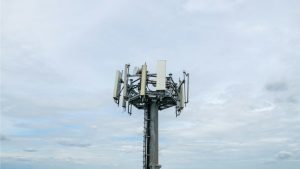5G standalone (5G SA) network deployments are gaining momentum, according to analysts, laying the foundation for high-performance, low-latency services targeted at enterprise sectors and specialized services for consumers. The Asia Pacific and Europe region has 145 5G SA networks in 63 markets either launching or demonstrating intent to launch 5G SA networks.
“Despite a slow start, the EMEA region has accelerated its deployment pace, accounting for 70-75 percent of commercial SA launches in the last two years, with Spain and Austria emerging as regional leaders,” Ookla writes.
In North America, T-Mobile turned on its 5G SA network in 2022. Other operators began to focus on nationwide 5G SA investment in 2024, according to GSMA Intelligence, with AT&T and Verizon planning to further expand their 5G SA deployments in 2025.
“The transition to 5G SA networks will accelerate as operators recognise the need to unlock 5G’s full potential,” GSMA Intelligence writes. “By the end of 2025, additional markets will announce SA rollouts, with operators focusing on enhanced enterprise use cases.”
Reducing latency to a few milliseconds, 5G SA makes possible AI applications requiring real-time responsiveness. Additionally, the use of AI can help the operator with network management.
“Operators in China are advanced in their integration of AI into 5G SA networks to boost network management,” GSMA Intelligence writes. “We are likely to see further use of AI among operators that have launched 5G SA to optimize operations.”
5G SA provides features such as network slicing, which allows for flexibility of infrastructure use and resource allocation for specialized applications, according to Cradlepoint, an Ericsson company that provides 5G solutions. Applications — such as gaming, industrial automation, autonomous vehicles and remote surgery — all depend on ultra-low latency.
The features provided by 5G SA can open the door to consumer monetization, according to Ookla. A recent Omdia survey of 19,000 respondents showed that they are willing to pay more for specific benefits like faster speeds, priority video streaming, location-based speed boosts, reduced gaming lag and better performance for work applications — all of which can be provided with 5G SA.
For an extra fee, Elisa in Finland offers SA-enabled premium speeds, Three Austria provides bandwidth guarantees; Singtel gives priority access at events; Deutsche Telekom offers reduced lag times for gamers; and U.K. operators provide prioritized connections in crowded areas.
“These early examples demonstrate a clear shift toward more targeted service offerings,” Ookla writes. “Operators are finding that different customer segments have different priorities and different willingness to pay for enhanced services, and the most successful approaches recognize these differences rather than treating all customers the same.”
The drive to develop new use cases was seen this week as Nokia, Telia and the Finnish Defense Forces conducted the first seamless 5G standalone slice handover between multiple countries on a live network, according to Nokia.
“The test was conducted as part of a Nordic military exercise with the Finnish Defense Forces. It demonstrated a continuous and secure data connection over a 5G SA slice, while moving across three separate networks in three different countries,” according to a Nokia spokesman.
The trial was achieved using Nokia’s 5G Core Software as a Service (SaaS) and AirScale 5G base stations powered by ReefShark System-on-Chip technology, connected to Telia’s commercial network. Additionally, Nokia’s intelligent network management system, MantaRay NM, provided a consolidated network view, optimizing monitoring and management.



